I have been drawing since I was four years old. I learned to draw from my father, who would entertain me by inventing cartoon animals. Although he never pursued an artistic career, he encouraged me to continue drawing throughout my school years. Drawing became a way of commanding respect and communicatiing with people. When I was eighteen, my work, which had been primarily cartoon-oriented, became increasingly abstract and concerned with spontaneous action. I became interested in Eastern Calligraphy and the art of the Gesture. When I moved to New York City at the age of twenty, I started to experiment with drawing on paper that was so large that I had to stand inside the drawing. Although my work was still “Abstract” at this time, I became aware of the vast differences in people’s responses to the work. Different people saw different things in the drawings. I remember most clearly an afternoon of drawing ina studio that large doors that opened onto Twenty-second Street. All kinds of people would stop and look at the huge drawing and many were eager to comment on their feelings toward it. This was the first time I realized how many people could enjoy art if they were given the chance. These were not the people I saw in the museums or in the galleries but a cross section of humanity that cut across all boundaries. This group of different people living and working together in harmony has always been my prime attraction to New York.
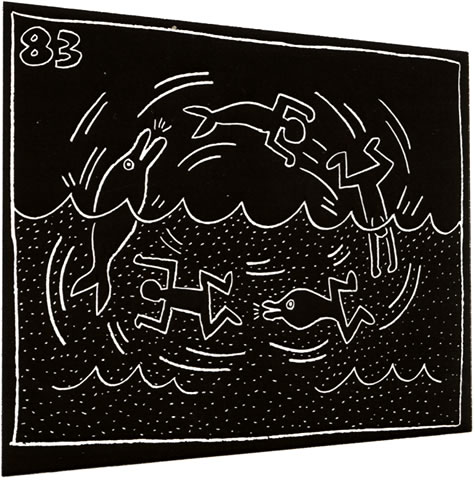
Untitled, 1983 | Chalk on paper | Photographer: Ivan Dalla Tana
I arrived in New York at a time when the most beautiful paintings being shown in the city were on wheels – on trains – paintings that traveled to you instead of vice versa. I was immediately attracted to the subway graffiti on several levels: the obvious mastery of drawing and color, the scale, the pop imagery, the commitment to drawing worthy of risk and the direct relationship between artist and audience. I had no intention, however, of jumping on the bandwagon and imitating their style.
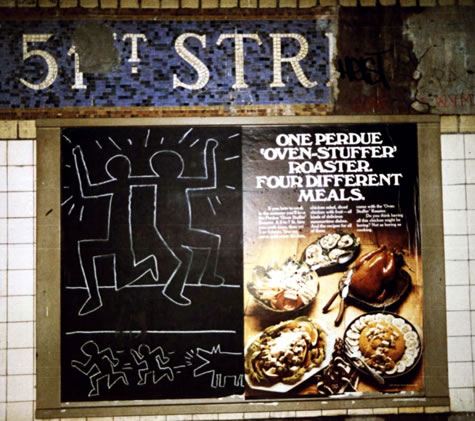
Untitled, 1982 | Chalk on paper | Photographer: Ivan Dalla Tana
For two years, I was an observer. During that time, my art was going through several changes. I began making videotapes and doing performances. I was introduced to the work of William Burroughs and began experimenting with words and meaning ina similar style. I studied semiotics, the science of signs and symbols.
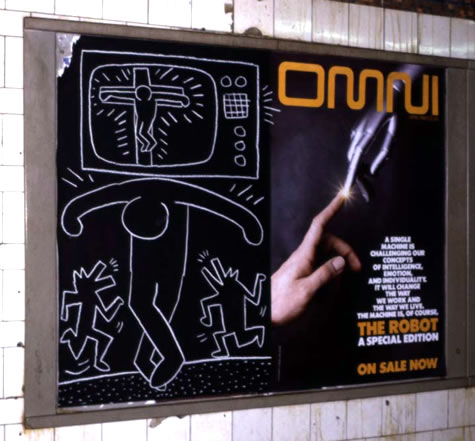
Untitled, 1982 | Chalk on paper | Photographer: Ivan Dalla Tana
In 1980, I returned to drawing with a new commitment to purpose and reality. If I was going to draw, there had to be a reason. That reason, I decided, was for people. The only way art lives is through the experience of the observer. The reality of art begins in the eyes of the beholder and gains power through imagination, invention, and confrontation.
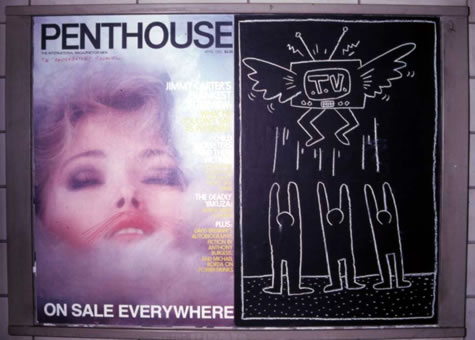
Untitled, 1982 | Chalk on paper | Photographer: Ivan Dalla Tana
Doing things in public was not a new idea. The climate of art in New York at that time was certainly moving in that direction. It seemed obvious to me when I saw the first empty subway panel that this was the perfect situation. The advertisements that fill every subway panel that this was the perfect situation. The advertisements that fill every subway platform are changed periodically. When there aren’t enough new ads, a black paper panel is substituted. I remember noticing a panel in the Times Square station and immediately going aboveground and buying chalk. After the first drawing, things just fell into place. I began drawing in the subways as a hobby on my way to work. I had to ride the subways often and would do a drawing while waiting for a train. In a few weeks, I started to get responses from people who say me doing it.
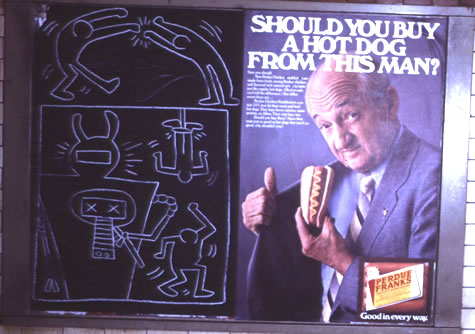
Untitled, 1982 | Chalk on paper | Photographer: Ivan Dalla Tana
After a while, my subway drawings became more of a responsibility than a hobby. So many people wished me luck and told me to “keep it up” that it became difficult to stop. From the beginning, one of the main incentives was this contact with people I It became a rewarding experience to draw and to see the drawings being appreciated. The number of people passing one of these drawings in a week was phenomal. Even if the drawing only remained up for only one day, enough people saw it to make it easily worth my effort.
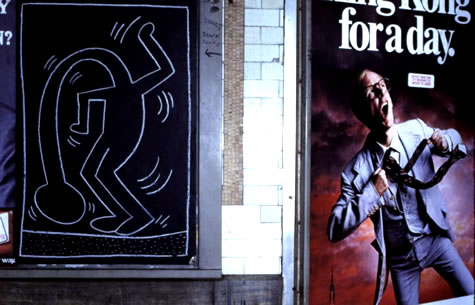
Untitled, 1982 | Chalk on paper | Photographer: Ivan Dalla Tana
The panel remains from a few days to a few weeks before a new advertisement is posted on tip of it. This constant replenishment forces me to keep inventing new images and ideas.
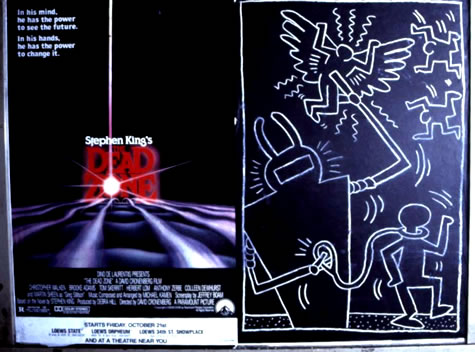
Untitled, 1982 | Chalk on paper | Photographer: Ivan Dalla Tana
The images are part of the collective consciousness of modern man. Sometimes they stem from world events, sometimes from ideas about technology or people changing roles in relation to God and evolution. All of the drawings use images that universally “readable”. They are are often inspired by popular culture.
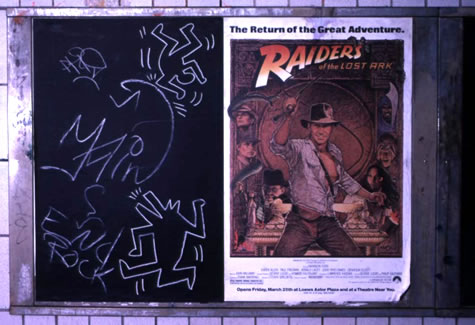
Untitled, 1982 | Chalk on paper | Photographer: Ivan Dalla Tana
The drawings are designed to provoke people to think and use their own imagination. They don’t have exact definitions but challenge the viewer to assert his or her own ideas and interpretation. Sometimes, people find this uncomfortable, especially because the drawings are ina space usually reserved for advertisements which tell you exactly what to think. Sometimes the advertisements on the side of the empty panels provide inspiration for the drawings and often create ironic associations.
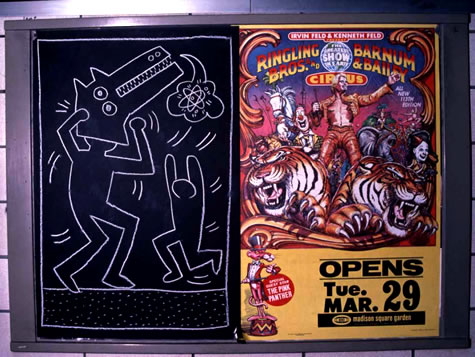
Untitled, 1982 | Chalk on paper | Photographer: Ivan Dalla Tana
When there are grafitti “tags” (signatures) on the black panel before I arrive, I usually draw around and in between the signatures. I would never draw over other people’s tags. This mutual respect among graffiti writers, however, does not extend to other people. Sometimes other people sign my drawings after I’ve left. Sometimes they erase them, cross them out, or even steal them. These are the only things that inhibit my work in the subway.
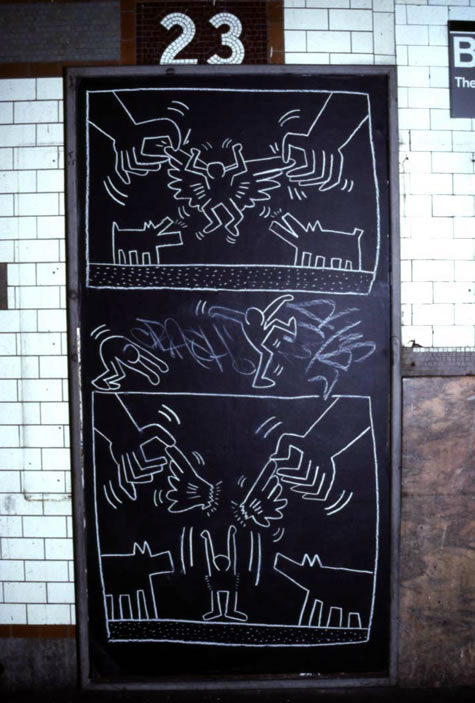
Untitled, 1982 | Chalk on paper | Photographer: Ivan Dalla Tana
The drawings are by necessity quick and simple. This is not only for easy readability but also to avoid getting arrested. Technically they are still graffiti. Because they are only chalk and the black ads are only temporary, it is hard to call them vandalism; however, different policeman respond in different ways. I have been caught many times. Some cops have given me a $10.00 ticket, some have handcuffed me and taken me in. By the time they let me go, most of them tell me they like the drawing, but they’re just doing their job. More than once, I’ve been taken to a station handcuffed by a cop who realized, much to his dismay, that the other cops in the precinct are my fans and were anxious to meet me and shake my hand.
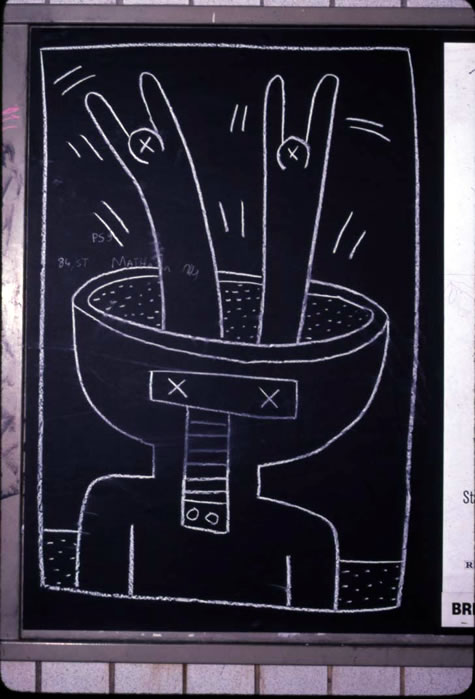
Untitled, 1982 | Chalk on paper | Photographer: Ivan Dalla Tana
I have been drawing in the subway for three years now, and although my career aboveground has skyrocketed, the subway is still my favorite place to draw. There is something very “real” about the subway system and the people who travel in it; perhaps there is not another place in the world where people of such diverse appearance, background, and life-style have intermingled for a common purpose. In this underground environment, one can often feel a sense of oppression and struggle in the vast assortment of faces. It is in this context that an expression of hope and beauty carries the greatest rewards.
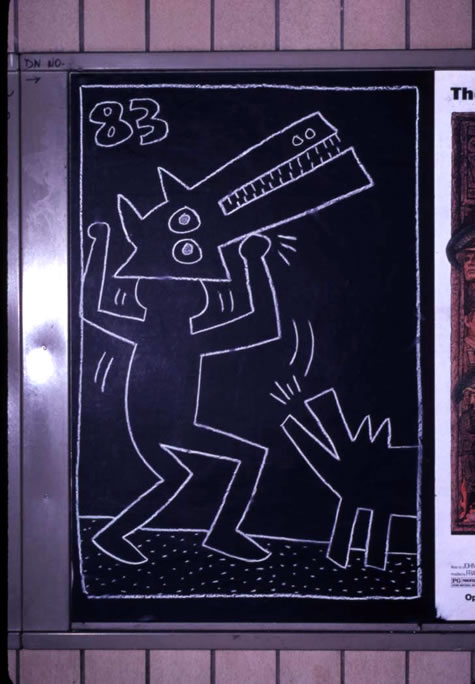
Untitled, 1983 | Chalk on paper | Photographer: Ivan Dalla Tana
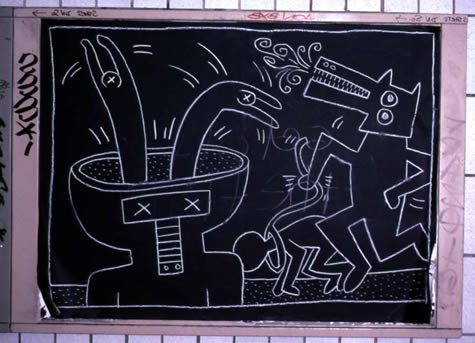
Untitled, 1982 | Chalk on paper | Photographer: Ivan Dalla Tana
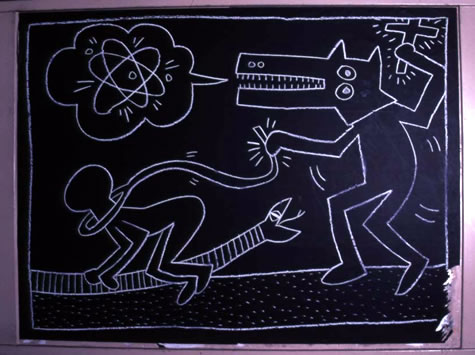
Untitled, 1982 | Chalk on paper | Photographer: Ivan Dalla Tana
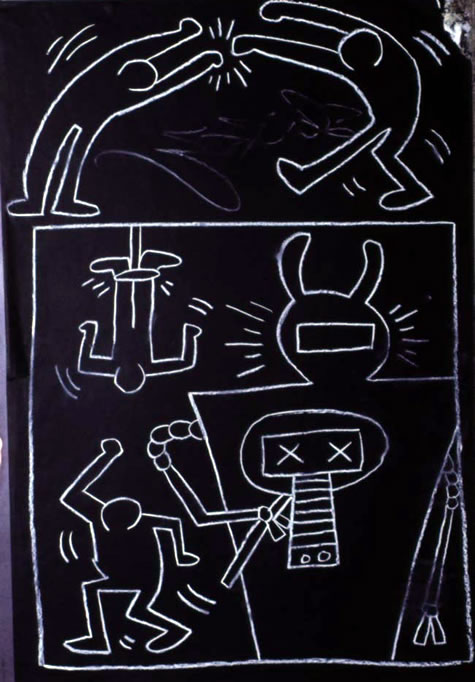
Untitled, 1982 | Chalk on paper | Photographer: Ivan Dalla Tana

Untitled, 1984 | Chalk on paper
Photographer: Ivan Dalla Tana
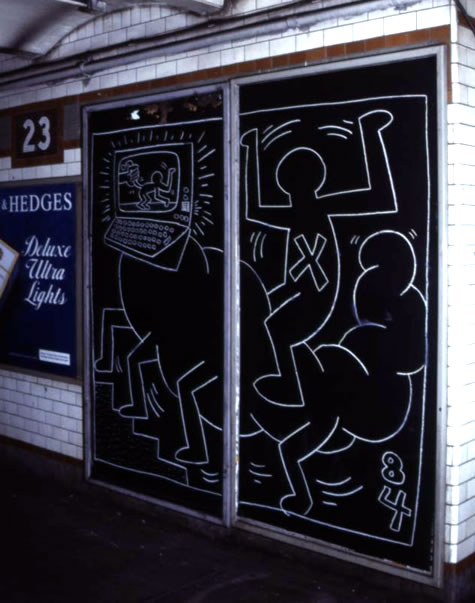
Untitled, 1984, Chalk on paper | 88 1/2 x 46 inches
Photographer: Ivan Dalla Tana